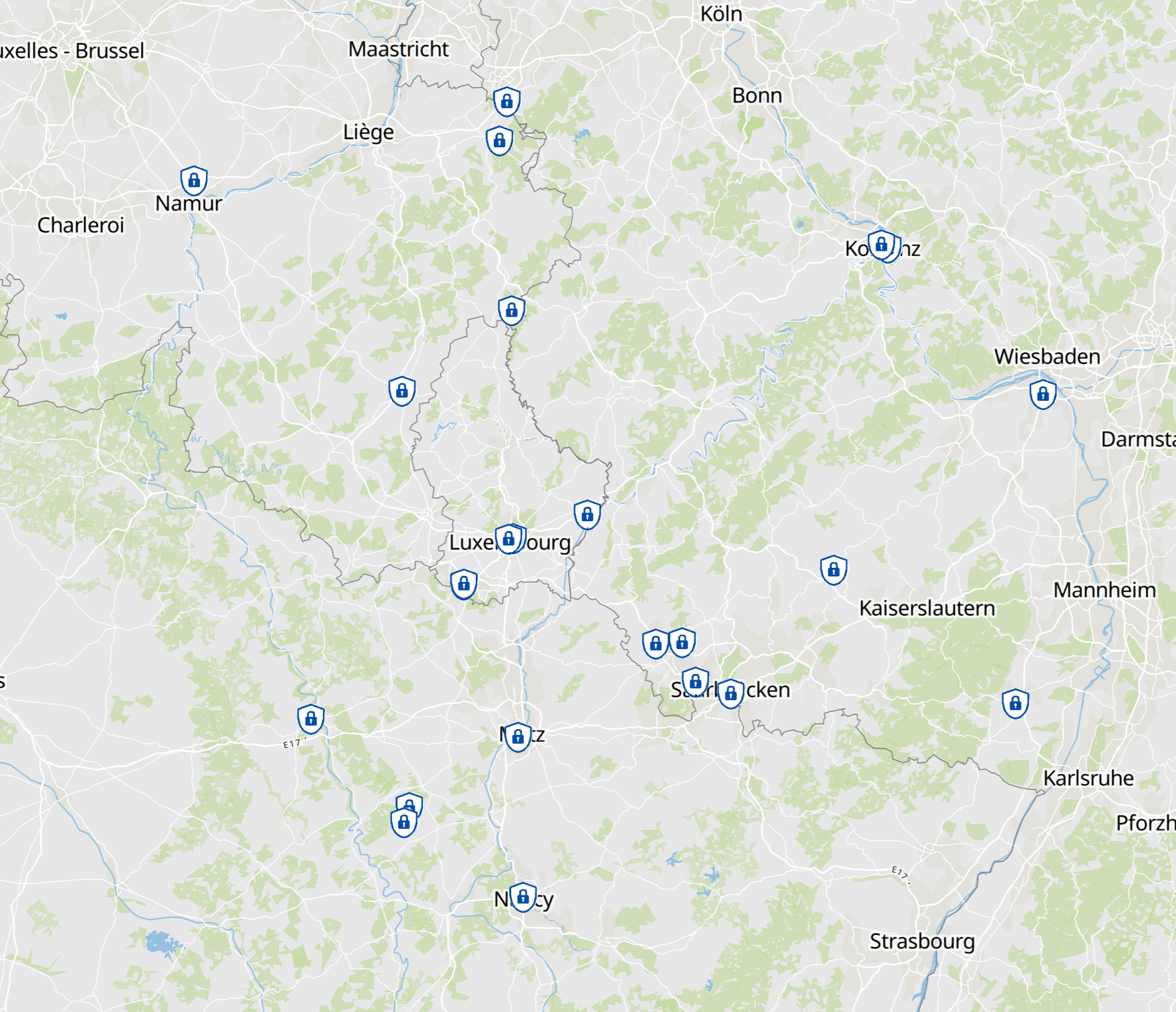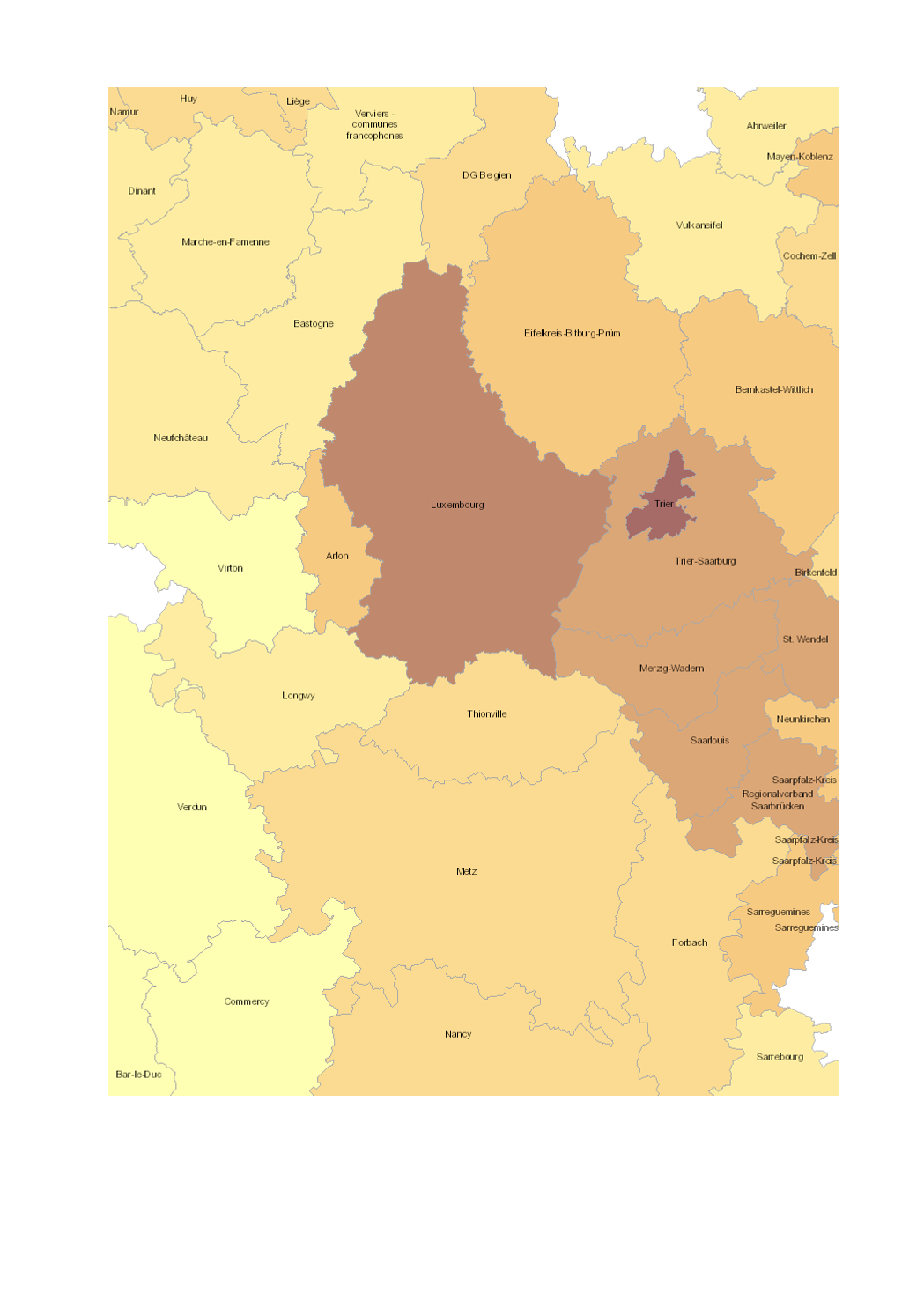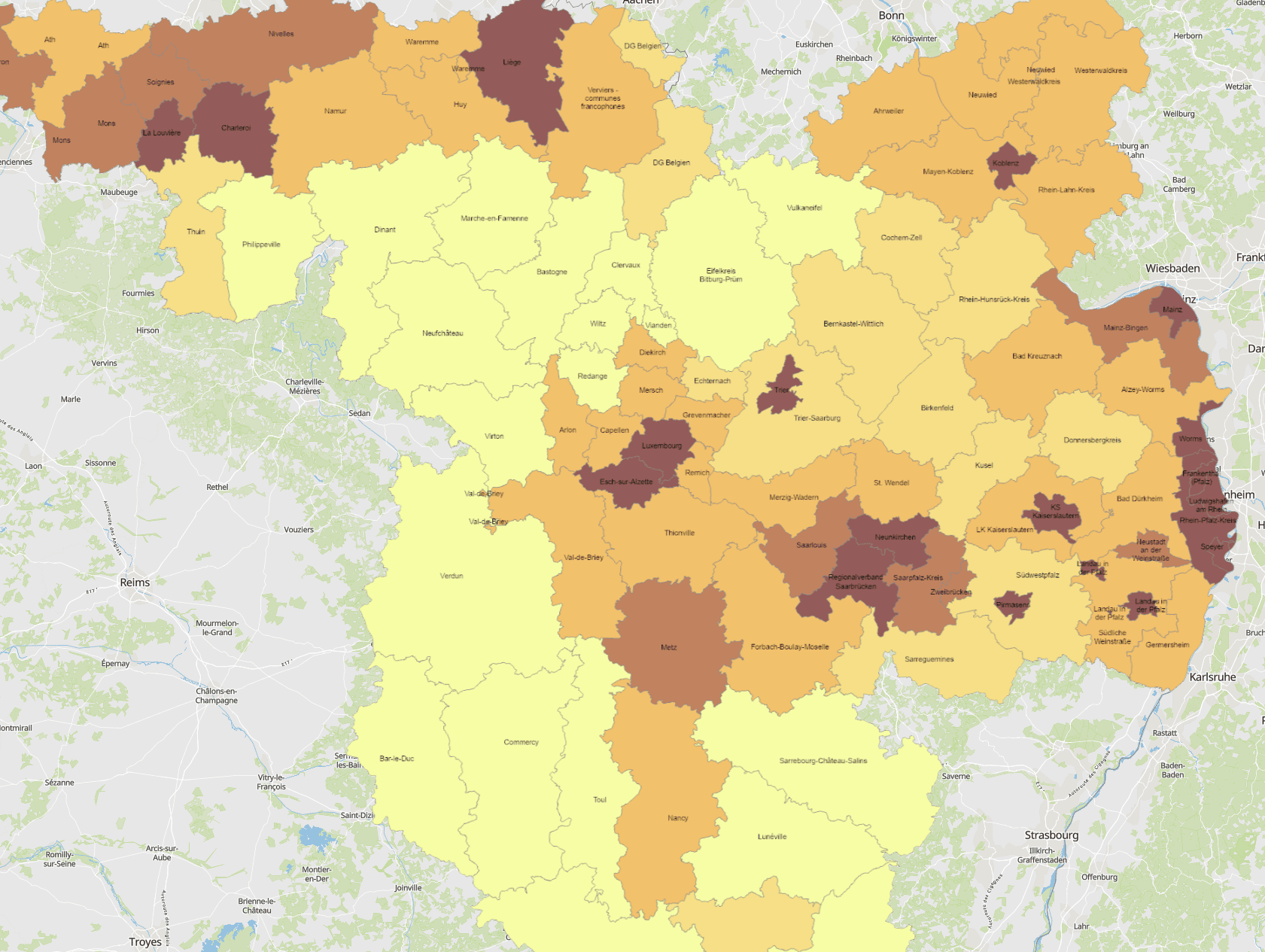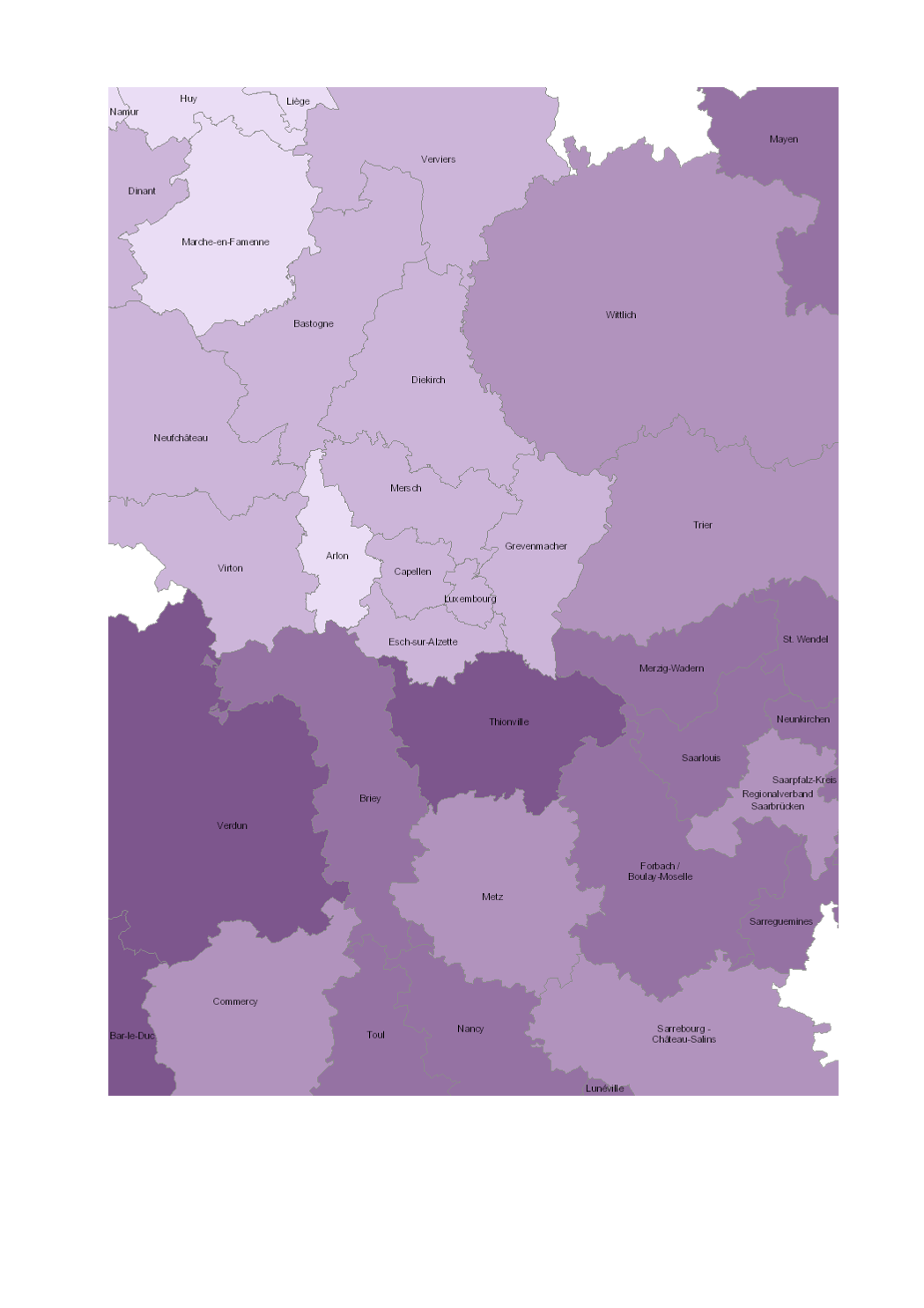Type of resources
Available actions
Topics
Keywords
Contact for the resource
Provided by
Groups
Years
Formats
Representation types
Update frequencies
status
Scale
-
- Population density 2021 (inhabitants per km²), Lorraine: 2019 - Territorial entities: arrondissements (Lorraine, Wallonie), cantons (Luxembourg), Kreise (Saarland, Rheinland-Pfalz) - Statistical data sources: Destatis, INSEE, Statbel, STATEC. Harmonization: IBA / OIE 2022 - Geodata sources: GeoBasis-DE / BKG 2017, IGN France 2017, NGI-Belgium 2017, ACT Luxembourg 2017. Harmonization: SIG-GR / GIS-GR 2022
-

- Calendar 2025 of the Greater Region: Security, prevention and civil protection - Data: Working party Land registry and mapping of the Summit of the Greater Region: Harmonization: GIS-GR 2025
-

- Share of the working age population (20-64 years) in total population 2014 (Lorraine: 2013) - Territorial entities: arrondissements (Wallonie), zones d'emploi (Lorraine), Grand Duchy (Luxembourg), Kreise (Saarland, Rheinland-Pfalz) - Statistical data sources: INSEE Grand Est; SPF Economie; Statistisches Landesamt Rheinland-Pfalz; Statistisches Amt Saarland; STATEC. Calculations: OIE/IBA 2016 - Geodata sources: EuroGeographics EuroRegionalMap v9.1 - 2016. Harmonization: SIG-GR / GIS-GR 2016
-

- Population density 2023 (inhabitants per km²), Lorraine: 2021 - Territorial entities: arrondissements (Lorraine, Wallonie), cantons (Luxembourg), Kreise (Saarland, Rheinland-Pfalz) - Statistical data sources: Destatis, INSEE, Statbel, STATEC. Harmonization: IBA / OIE 2024 - Geodata sources: GeoBasis-DE / BKG, IGN France, NGI-Belgium, ACT Luxembourg. Harmonization: SIG-GR / GIS-GR 2024
-
Presence of the Soprano pipistrelle (Pipistrellus pygmaeus) - Illustration as grid cells 10x10km - Data sources: MNHN Luxemburg, MNHN France, Ministerium für Umwelt und Verbraucherschutz Saarland, Landesamt für Umwelt (LfU) Rheinland-Pfalz, SPW/ARNE/DEMNA, Natagora and collaborators
-
- Population density 2019 (inhabitants per km²), Lorraine: 2017 - Territorial entities: arrondissements (Wallonie), zones d'emploi (Lorraine), cantons (Luxembourg), Kreise (Saarland, Rheinland-Pfalz) - Statistical data sources: Destatis, Eurostat, INSEE, Statbel, STATEC. Harmonization: IBA / OIE 2020 - Geodata sources: GeoBasis-DE / BKG 2017, IGN France 2017, NGI-Belgium 2017, ACT Luxembourg 2017. Harmonization: SIG-GR / GIS-GR 2020
-

Administrative entities of the Greater Region (08/2015) - Data source: EuroGeographics EuroRegionalMap v3.0 - 2010
-

Share of road traffic accidents involving injury with seniors (aged 65+ years) 2012-2016 - Source: Sub-Working Group on Road Safety of the Summit of the Greater Region 2017 - Base map: © ACT Luxembourg 2017, IGN France 2017, GeoBasis-DE / BKG 2017, NGI-Belgium 2017
-
UniGR cross-border study DFHI-ISFATES: International Tourism Management (B.A.) - Source: DFHI-ISFATES
-
UniGR cross-border study programme: EEIGM - École Européenne d'Ingénieurs en Génie des Matériaux (M.Sc.) - Source: UniGR
 geocatalogue.geoportail.lu
geocatalogue.geoportail.lu